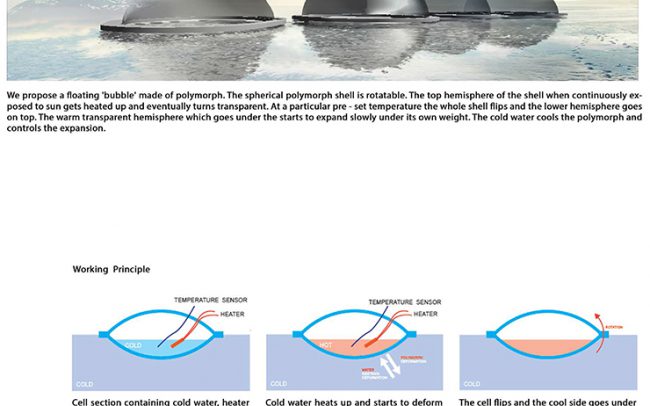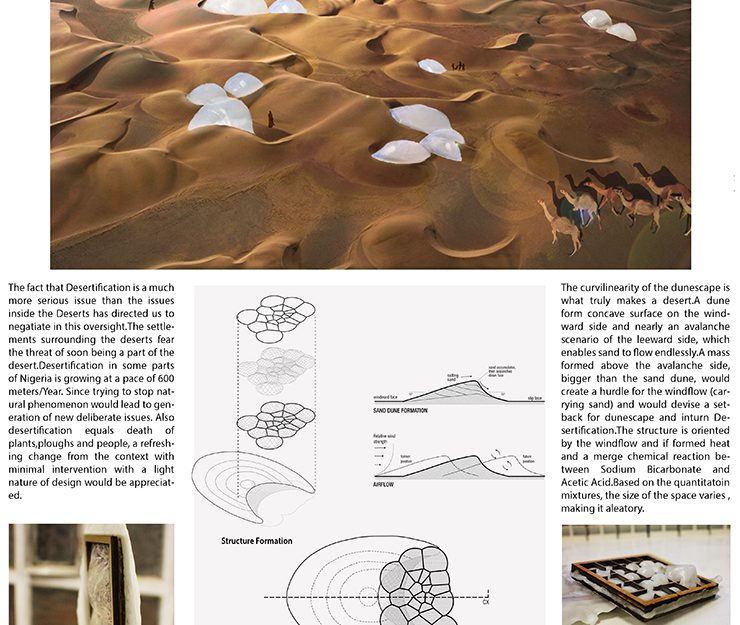workshop exploring smart materials and adaptive architecture
These are the results of a four day workshop held at the Institute of Advanced Architecture of Catalonia as a collaboration between IAAC, ETH CAAD and Chalmers exploring a selection of materials for the creation of architectural proposals for extreme environments.
Workshop Brief
In traditional architecture, a change in a material’s property, such as its volume or elasticity, was generally seen as a potential problem affecting the performance of built structures. Static planar surfaces related with stability or even durability have long dominated the architectural vision. When, as a consequence to the introduction of domotics, design disciplines started to explore kinetic and dynamic performances to increase efficiency, this was done following mere rules of mechanical actuators and heavy motor or servo-based systems plugged-in in whichever material surface. Today, progress in novel and advanced materials coming from disciplines such as medicine or aerospace engineering raise the challenge of adaptation following smart, active or reactive materials that are able to alter their properties
reacting to external stimuli. Changes in state, colour, and volume take place with no need of any computing device or mechanical actuator; rather the material itself has all these functions programmed into its persistence on a molecular scale.
In parallel, the 21st century challenges related with global warming, i.e. global temperatures that rise and cause climate change and global urbanization, raise new questions regarding our way of building and inhabiting. Architecture, will have to respond to extreme weather conditions, especially the rise of temperature in densely urbanized areas and smart materials will play a critical role in the architectural process of dealing with the current challenges of the global context.
The workshop will introduce a series of “smart materials” such as polymorph plastics, shape memory polymers, bioplastics, thermochromic pigments, temperature-sensitive and electroconductive materials for 3d printing. The objective is to explore active materials and develop dynamic architectural proposals for extreme environmental conditions where temperatures in urbanized areas surpass 70 or 80 degrees Celsius. Such extreme temperatures are able to activate a series of smart materials that can change state when heated in high temperatures. Which architectural systems can be dynamic and react to environmental conditions such as temperature shifts? Can buildings and cities perform as environmentally integrated living organisms? How can architecture remember and learn from previous experiences, therefore evolving with embedded intelligence?
Thermoteam
Alina Kvirkveliya, Ji Won Jun, Josep Alcover, Jose Algeciras, Matteo Silverio, Yoko Gotoh
Manoeuvring Reticulation
Christoph Zechmeister, Daphne Arnellou, Despoina Pippa, Luisa Roth, Nohelia Gonzalez, Shreyas More
Thermoluminescence
Nina Jotanoivc, Panagiota Sarantinoudi, Farah Alayeli, Apostolos Apostolinas, Lubna Alayeli, Ceren Temel
Survival Bubble
Anna Maragkoudaki,Tsung Hsun Ku, Devika Chandrababu, Ninada Kashyap, Fatimah Sujna Shakir
Delaying Desertification
Anusha Arunkumar, Eırını Aıkaterını Papakonstantınou, Kunal Chadha, Mansi Jasmin Radadia, Ryal Sequeira, Silasalin Krisanarungkhun, Yessica Mendez














